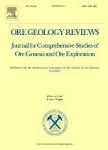版权所有:内蒙古大学图书馆 技术提供:维普资讯• 智图
内蒙古自治区呼和浩特市赛罕区大学西街235号 邮编: 010021

作者机构:Univ Kurdistan Fac Engn Dept Min Engn Sanandaj Iran Malayer Univ Fac Engn Dept Min Engn Malayer Iran Corp Geosci Grp CGSG POB 5128 Rockingham Beach WA 6969 Australia James Cook Univ Coll Sci & Engn Econ Geol Res Ctr EGRU Townsville Qld 4811 Australia Univ Sains Malaysia USM Sch Mat & Mineral Resources Engn Engn Campus Gelugor Malaysia
出 版 物:《ORE GEOLOGY REVIEWS》 (Ore Geol. Rev.)
年 卷 期:2025年第177卷
核心收录:
学科分类:0819[工学-矿业工程] 0709[理学-地质学] 08[工学]
基 金:The authors express their sincere gratitude to the Editor-in-Chief Prof. Huayong Chen and the reviewers for their constructive comments which significantly improved the quality of this paper. The authors would like to thank Mr. Shahoo Maleki for his kind support
主 题:Mineral prospectivity mapping Gray Wolf optimization algorithm Mineral exploration targeting
摘 要:Exploration targeting is a multi-step process concerned with delimiting progressively smaller areas that are prospective for the targeted mineral deposit type, capable of hosting a potentially economic deposit and deserving of exploration funds. In mineral prospectivity modeling (MPM), target delineation represents the final stage of a procedure designed to identify discrete, explorable areas of high discovery potential within a much larger area of interest, typically covering entire camps, districts or provinces. However, defining unbiased thresholds for discriminating between high, moderate and low priority exploration targets is not a straightforward task. To avoid human bias in this thresholding process, a more structured, automated approach is needed. This study presents a simulation-based approach to MPM that adapts the Grey Wolf Optimizer (GWO) algorithm, a swarm intelligence method capable of objectively delineating exploration targets from MPM results. Our approach aims to reduce bias by applying Monte Carlo Simulation to the assignment of robust weights to the predictor maps at the core of the MPM procedure. The GWO algorithm facilitates the classification and prioritization and enhances the accuracy and reliability of the resulting targets. The proposed procedure is demonstrated here using a porphyry copper (Cu) example from the Chahargonbad district, SE Iran. The results show that the GWO-based framework not only identifies high-priority exploration zones but also reduces the uncertainty inherent in traditional manual selection methods. As such, this novel approach contributes to both theoretical and practical advancements in the field of mineral exploration, offering a scalable solution that can be adapted to various geological settings.